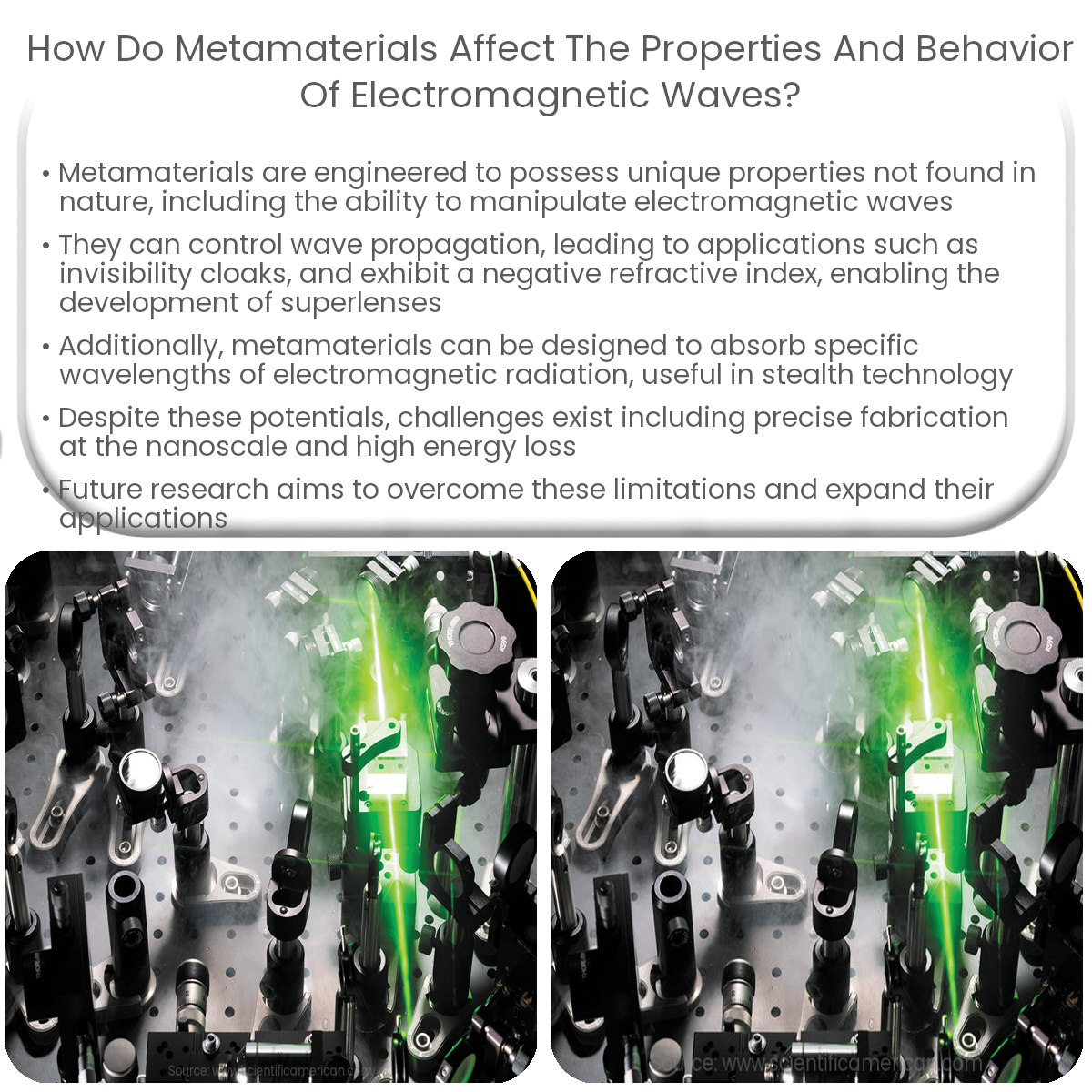Metamaterials can manipulate electromagnetic waves by controlling their propagation, exhibiting negative refractive index, and absorbing energy.
Introduction to Metamaterials and Electromagnetic Waves
Metamaterials are artificial materials engineered to possess unique properties not typically found in natural materials. These materials have the ability to manipulate electromagnetic waves, such as light and radio waves, in ways that were once thought impossible. In this article, we will explore how metamaterials affect the properties and behavior of electromagnetic waves.
Controlling Wave Propagation
Metamaterials can be designed to control the direction in which electromagnetic waves propagate. They achieve this by carefully arranging sub-wavelength structures called meta-atoms, which interact with the waves and cause them to bend, refract, or reflect in a specific manner. This property has led to the development of devices like invisibility cloaks, which can guide light waves around an object and render it invisible.
Negative Refractive Index
One of the most striking characteristics of metamaterials is their ability to exhibit a negative refractive index. In nature, materials have a positive refractive index, causing light to bend when it enters the material. However, metamaterials with a negative refractive index cause light to bend in the opposite direction. This property has led to the creation of superlenses, which can potentially surpass the diffraction limit of conventional lenses and enable imaging of sub-wavelength details.
Electromagnetic Wave Absorption
Metamaterials can also be engineered to absorb electromagnetic waves rather than reflecting or transmitting them. By adjusting the meta-atoms’ geometry and composition, researchers can create materials that absorb specific wavelengths of electromagnetic radiation. This property has numerous potential applications, such as in stealth technology, where the aim is to reduce an object’s radar signature by absorbing radar waves.
- 1 Invisibility Cloaks
- 2 Superlenses
- 3 Stealth Technology
Challenges and Future Research
Despite their potential, metamaterials still face significant challenges. Fabricating these materials requires precise control over the size, shape, and arrangement of meta-atoms, which can be difficult to achieve at the nanoscale. Additionally, many metamaterials exhibit high levels of energy loss, limiting their practical applications. Future research will focus on overcoming these limitations and discovering new ways to harness the unique properties of metamaterials for a variety of applications.
- Improved Fabrication Techniques
- Reducing Energy Loss
- Expanding Applications


